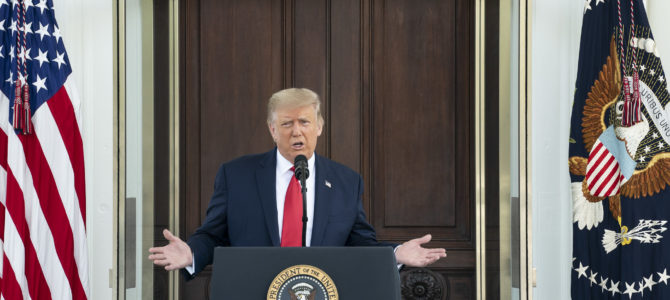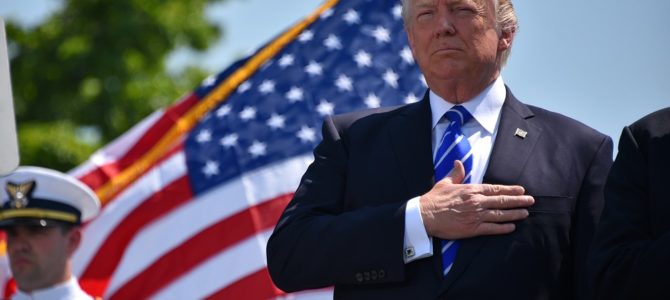
Most Republican voters dislike the frontrunner for their party’s nomination and he hasn’t won the majority of the vote in a single state, yet could be on path to victory because he has been running against a fractured GOP field. Now we are finally down to where that frontrunner has only one clear challenger, with the two of them having won 29 of the 31 states to date and having won 9 states apiece outside of the South.
Yet in Thursday’s lead editorial, the Wall Street Journal does its best to make the case for a three-person race rather than a two-person race. While trying to make the case for John Kasich, the Journal writes of challenger Ted Cruz and frontrunner Donald Trump,
Mr. Cruz’s problem is that it isn’t clear he can beat Mr. Trump one-on-one, especially in the Pacific coast and Northeast states still to be contested. The Texan’s victories have come in the South, the Plains states and low-turnout caucuses like Maine’s. Mr. Cruz finished back in the pack in New England outside Maine, and the states coming up include Connecticut, Rhode Island, New Jersey, New York, Delaware and Maryland. Mr. Trump wins the nomination if he wins most of those states.
This is wrong on multiple counts. Cruz has won exactly no states in the South (only a New Yorker would say Texas or Oklahoma are part of the South). His lopsided victories in Idaho and Utah weren’t in Plains states (they are on the other side of the Rockies). If he finished “in the back of the pack” in New Hampshire—despite finishing third, ahead of Jeb Bush, Marco Rubio, and Chris Christie—then so, presumably, did Kasich (who finished 20 points behind Trump and just 4 points ahead of Cruz).
Moreover, Trump cannot win the nomination on the basis of winning “most” of the Northeastern states the Journal lists. In fact, if Trump were to add all of the delegates in those six states—Connecticut, Rhode Island, New Jersey, New York, Delaware, and Maryland—to his existing tally, he would still have only 986 delegates, or 79.7 percent of the 1,237 he needs for a majority.
Kasich Loses Big to Trump in His Supposedly Strong States
Indeed, of the 839 delegates to be awarded from states still to come, only 29 percent are from the six states the Journal lists. Whether Kasich would be a help or a hindrance in those Northeastern states, he would clearly be a hindrance in the states with the other 71 percent of delegates—and that’s not a good tradeoff.
In truth, however, it is not even clear that Kasich would help in the Northeast. As noted, he lost to Trump by 20 points in New Hampshire. He lost to Trump by 31 points in Massachusetts. He lost to Cruz in the Maine caucuses. The only place he has posed any threat to Trump in the Northeast—indeed, the only place where he has come close to winning outside of his home state of Ohio—was in Vermont, where he lost by 2 points.
But only about a third as many people voted in the tiny Vermont primary as in the Iowa or Utah caucuses. Outside of Vermont and Ohio, Kasich hasn’t come within ten points of the winner in any other state from coast to coast.
Michael Barone writes of Kasich’s prospects in one key Northeastern state: “His boosters look to New York, which votes April 19. But its registered Republicans are less likely to be Ivy Leaguers liberal on cultural issues (they’re Democrats now) than Italian-American homeowners angry about high property taxes and corrupt local governments. Cruz might be competitive with Trump among such voters. Kasich would just split the vote and give Trump more delegates, as he did in Illinois.”
One recent poll suggests Kasich might be competitive in Pennsylvania, but more than likely his presence would just end up swinging that state to Trump as well. Kasich has already finished behind both Trump and Cruz in both Michigan and Illinois (losing in Illinois by 19 points to Trump and 11 points to Cruz), and Barone writes that, while “the Philadelphia suburbs have lots of upscale voters, the only demographic among which Kasich has run well,” the “Philly suburbs cast only about one-fifth of Pennsylvania primary votes.”
He adds, “In Ohio, despite his local popularity, Kasich lost every county along the Pennsylvania and West Virginia borders. He’s likely to do worse against Trump in demographically and attitudinally similar western Pennsylvania, which casts as many votes as the Philly suburbs….”
Kasich Swings States to Trump
Outside of the Northeast, the damage that Kasich would do is even more evident. His presence in the race has already pretty clearly swung North Carolina (a three-point Trump win in which Kasich got 13 percent of the vote) and Missouri (a 0.2-point Trump win in which Kasich got 10 percent of the vote) from the Cruz to the Trump column.
Likewise, recent Wisconsin polling finds Kasich is hurting Cruz there: “In the GOP primary, Ohio Governor John Kasich finishes far behind Cruz (36%) and Trump (35%), with 19% of the vote. It appears that Kasich is pulling votes from Cruz as Kasich supporters find Cruz more favorable than Trump, 36% to 27%.”
Most of the remaining states (and delegates) are west of Lake Michigan. In the 16 states west of Lake Michigan that have been contested so far, Cruz has beaten Trump in eight and has beaten Kasich by double-digits in all 16. (Indeed, Cruz has beaten Kasich by double-digits in nine of the other fifteen states as well.) Kasich’s continued presence in those states would merely help Trump.
In California, which is nearly twice as big as any other prize left on the board, the RealClearPolitics average of recent polling finds that Trump is on course to claim a clear plurality of the vote, and hence almost all of the state’s 172 delegates, despite having the support of only about one-third of the voters. It would be tough, on the other hand, for Trump to get 50 percent of the vote there in a one-on-one race against Cruz, especially given that California is a closed primary, in which only Republicans can vote.
Barone writes of the Golden State, “What happens there if the anti-Trump vote is split can be seen by looking back to 2008, when California voted early. John McCain won statewide with 42 percent, with the more conservative Mitt Romney and Mike Huckabee getting 35 and 12 percent. But most California delegates are chosen winner-take-all by congressional district, and with split opposition McCain carried 48 of the 53 districts and thus won 155 of 170 delegates.”
The Journal’s final argument is that polls suggest Kasich would stand a better chance against Hillary Clinton than Cruz would. That is sort of like arguing that a team that didn’t make the playoffs would match up better with a team in the World Series than the team that’s already there. It may be true, but it’s irrelevant.
Kasich has lost all 30 states that don’t start and end in “o,” and he’s not going to be the GOP nominee. After Republican voters have chosen an outsider candidate in all but two states, can the Journal really believe that an insider candidate who wins at the convention wouldn’t lose the support of a massive swath of the party, and hence lose the general election? (Besides, Cruz can beat Hillary.)
The question is not whether Kasich could or couldn’t win in November. The question is whether his continued presence this spring would hand the Republican nomination to Trump. The evidence suggests that it would.









